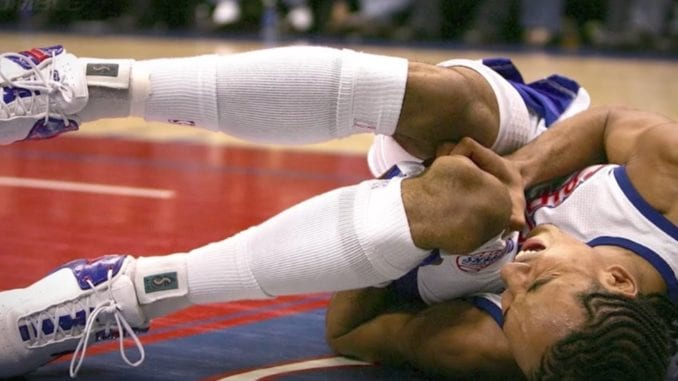Sports practice, whether in competition or not, is subject to the possibility of suffering injuries of different types that affect the whole musculoskeletal system and which are part, in addition to bones, muscles, ligaments, tendons and the joints. Special mention should be made of the spine, since muscle injuries can lead to more serious problems and joint problems can become especially serious. There are a number of things that you should know about sports injuries and their appropriate treatment. In most cases, going to an orthopedic surgeon is a wise choice.
Speaking of orthopedic surgeons, Gordon Slater is one who specializes in Minimally Invasive Foot Surgery (MIFS), particularly in the correction of bunions, and has a vast experience in orthopedic trauma. His special interests include ankle surgery, arthroscopy, and sports injuries and foot surgery. We asked him about some of the injuries he sees in professional athletes.
Muscle Injuries:
They affect the muscles and can be caused by direct trauma, overexertion, inappropriate movements, etc. In each type of sport, there are more frequent injuries than others, depending on the most demanded muscle groups, but in general, the following types of injury can be distinguished:
Contusion: They are produced by a blow on the muscle and can cause inflammation, pain and bruising.
Muscle cramp: The muscle contracts suddenly and shortens for a few moments, producing intense pain that lasts a few moments before calming down, although not completely.
Contracture: In this case, a contraction of the muscle is maintained over time, causing pain and limiting movement. This maybe the result of arthritis.
Distension: It is also called hyperextension or muscle elongation. It is generated when the muscle is stretched more than it can cover. It causes a diffuse pain that lasts over time.
Fibrillary rupture or muscle tear: One or more fibers of the muscle tissue are broken and its severity depends on the extent of the injury and its duration. The pain is acute and much localized, although the most serious cause the immediate immobility of the muscle. The medial gastrocnemius (calf) muscle gives particular problems.
Complete muscle break: The muscle breaks completely. The pain is intense, and you feel the inability to move a muscle, causing immobility.
Tendon lesions: Affect the tendons and can have multiple causes, from a bruise, the use of inappropriate sports equipment and footwear, inappropriate repetitive movements, etc.
Tendonitis of insertion or enthesitis: It is characterized by inflammation of the tendon insertions in the bone due to fibrillar microcracks caused by overload. In a high percentage of cases, it is a recurrent lesion.
Tendonitis: In this case, the tendon body is usually inflamed, although it can also affect the sheath (tenosynovitis) or peritendon (peritendinitis).
Partial breakage: It usually occurs especially in the longer tendons and is characterized by the breakage of a few fibers.
Total breakage: The tendon ruptures completely and usually occurs in veteran athletes.
Dislocation: The displacement of the tendon from its natural position occurs when performing certain movements. It is a very rare lesion.
Some of these injuries are treated with physiotherapy or immobilization. Others require early surgical intervention. Early diagnosis is essential.
















